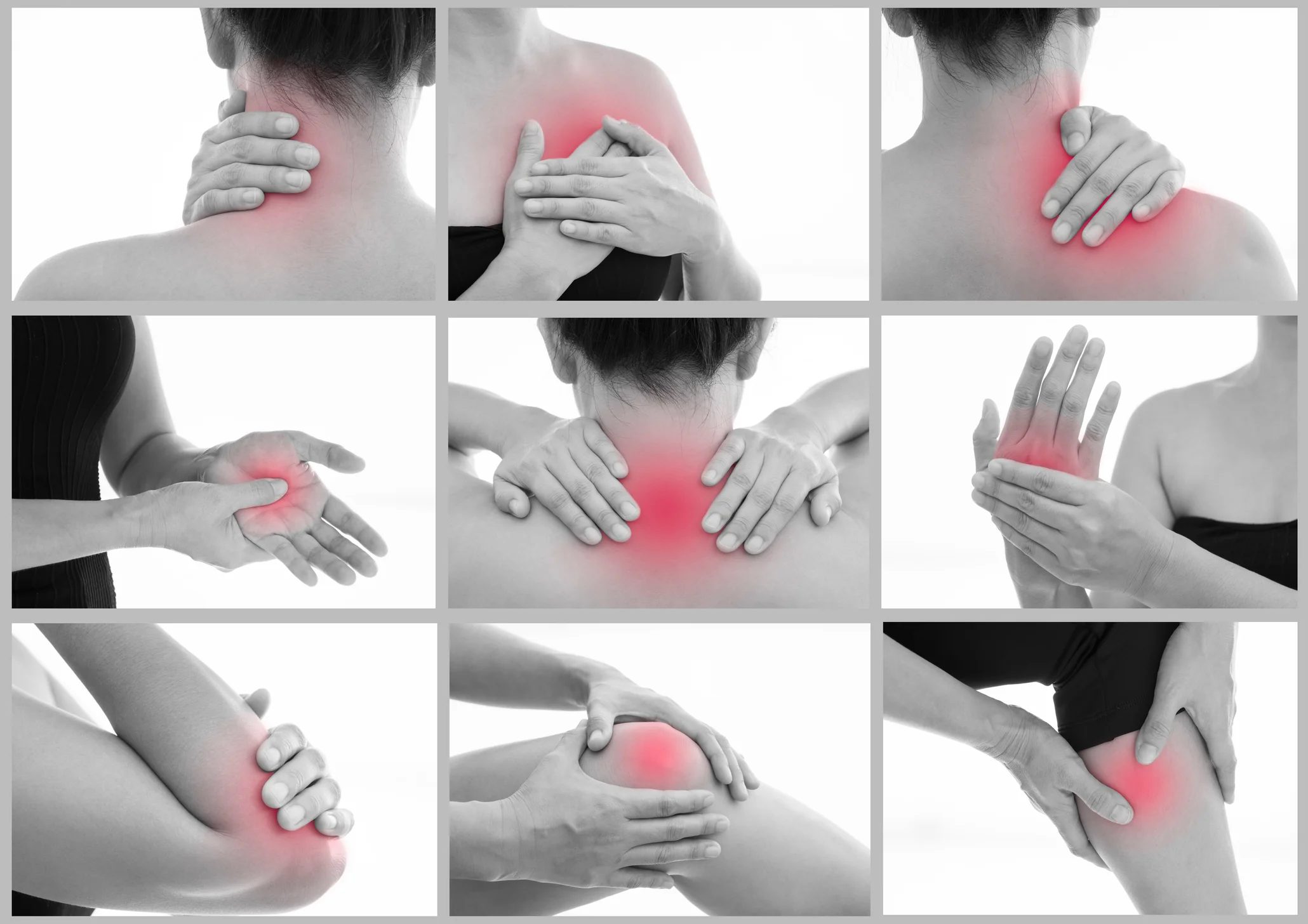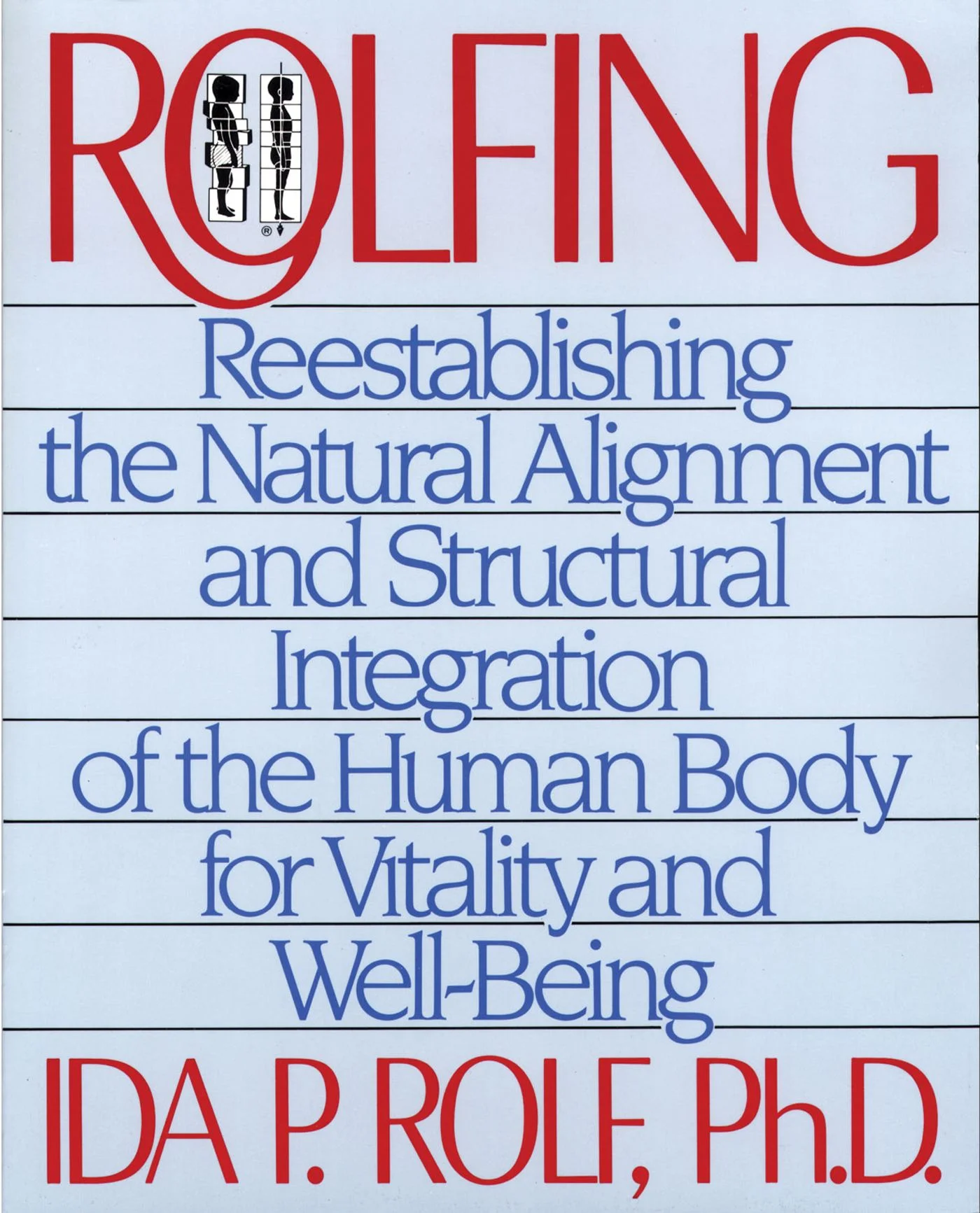The Difference Between Corrective Bodywork and Structural Integration (5 minute read)
Many people come to our practice because they are seeking relief from orthopedic pain. They show up for their first appointment dragging a trail of other therapeutic attempts to solve their problem. Their previous diagnoses range from Plantar Fasciitis to Migraine; from Bursitis to TMJ Dysfunction; from Pelvic Floor Dysfunction to Thoracic Outlet Syndrome.
While We never diagnose or even label these conditions, after an assessment, we usually determine that our work is indicated. These suffering individuals typically leave their first session with a little less pain and a lot more hope. In most cases after three or four sessions they report experiencing greatly diminished discomfort. Clients who have experienced this process are amazed at the results but not exactly sure what to call our work. “It’s not massage. It’s not chiropractic. You don't call it deep tissue work, so… ?”
So, what is this kind of therapy?
When we are focused on a local problem; when we are not assessing and treating you and your structure as a whole, we are engaging in Corrective Bodywork. This type of therapy is tremendously helpful to someone in pain. It is not, however, wholistic.
"Not wholistic?!" Some will be surprised at that description. What do we mean when we describe manual therapy as wholistic or not? Is there another type of manual therapy that is wholistic?
We will answer the last question first and the former in the next few paragraphs. The answer is: Yes! There is a wholistic form of manual therapy. It is called Structural Integration. Therapists who are certified in this type of therapy are called SI practitioners. To explain what we mean by wholistic, or not wholistic, we will outline three types of manual therapies, define Corrective bodywork and Structural Integration and then breifly compare the two.
There are three types of manual therapy.
Jeffery Maitland Ph.D and Jan Sultan, who are Advanced Rolfing Instructors and part of the Rolf Institute faculty, described three therapeutic paradigms which represent three potential attitudes toward treatment: palliative, corrective, and integrative (wholistic). [1] Many western doctors work from the corrective paradigm using "specialized methods of controlling symptoms." [2]
What is the difference between these paradigms? International Advanced Rolfing Instructor Pedro Prado Ph.D (also faculty at the Rolf Institute), explained Maitland and Sultan's three paradigms this way:
"Practices in the palliative paradigm seek to alleviate tension, pain or other symptoms. Practices in the second paradigm, the corrective, are directed toward the correction of that which produces the symptoms, seeking to alter the causes so as to eliminate the symptoms. Both of these paradigms indicate more superfcial or local interventions, whereas the third paradigm, the holistic, cultivates integration, i.e., balance and harmony within the person as a whole." [2]
So which kind of therapies fall into which categories?
What kind of manual therapy could be placed in the palliative paradigm?
As examples, we would put treatments like Swedish Massage and even trigger point therapy into the first category.* Manipulation associated with these approaches tends to be applied locally at the area of concern. This is a “where does it hurt” and “let me work there to alleviate it” process. This kind of work can be very relieving. The results, though are sometimes temporary. If the practitioner has poor structural vision (in other words they have not been educated to see how the shape of your body relates to your experience) the symptoms could actually be made worse; for example by manually lengthening tissue that is already positioned long.
How about the corrective paradigm?
As examples we would place Soft Tissue Joint Mobilization techniques and HVLA thrusting techniques (like those used by a chiropractor) in this category. "These biomechanical maneuvers are used to correct inter-articular misalignments in order to influence structures that are causing the symptoms" says Dr. Prado. [2] Corrective Bodywork as its name indicates, falls into this class too. What do Corrective Bodyworkers do? Casting a wide net we could say that therapists who practice good Corrective Bodywork borrow techniques from Structural Integration and Osteopathy. They apply them, though, with a different intent than an SI practitioner. Their focus is not as local as a practitioner working in a palliative manner but also not as global as someone working in the wholistic paradigm. The work of a Corrective Bodyworker can be profoundly alleviating. Depending on the presence, skill and again, the structural vision of the practitioner, the results of this work can be temporary or even aggravating to symptomatic tissue. A good Corrective Bodyworker though, can create life changing improvements in a suffering body.
What kind of treatment is included in the holistic paradigm?
Structural Integration fits squarely into this category. Structural integrators use manual techniques and movement reeducation to influence and organize a body around a vertical gravitational axis. Dr. Ida Rolf coined the term Structural Integration and is the originator of the therapy.
A handful of Ida's students, like Edward Maupin, Joseph Heller and Thomas Meyers to name just a few, have taught and written extensively about her work. They freely admit that we are still unraveling the import of some of her teachings.
“The idea in structural integration is to use connective tissue manipulation (myofascial work) and movement reeducation to lengthen the body and reorganize it around its vertical axis ”
SI is influenced by movement teachers like Joseph Pilates
SI practitioners are heavily influenced by the Osteopathic tradition. They also borrow unabashedly from movement teachers like Moshe Feldenkrais, Joseph Pilates and F.M. Alexander. Many Structural Integrators are certified or trained in other complimentary therapies like Cranial Sacral Therapy, Visceral Manipulation, Fascial Stretch Therapy or even Thai massage. The process of Structural Integration can be extremely rewarding for both client and practitioner. It is transformational work. SI may not be a good choice for someone seeking relief from very acute myofascial or musculoskeletal pain. They may benefit from receiving work from a more corrective perspective. The goal of Structural Integration is not to alleviate pain. However, unwanted symptoms often improve as a body is gradually brought into a better relationship with gravity. Certain discomforts seem to quietly leave the scene and are sometimes not even remembered by the client.
“If your symptoms get better, that’s your tough luck”
So there are three therapeutic roads you or your therapist may embark upon; a palliative one focused on very local relief through aleviating work like swedish massage; a corrective route focused on finding the cause of your symptoms; or a wholistic path focused on helping you- the whole you- physically relate to yourself, gravity, and your environment.
Interestingly, the three paradigms do not have to be mutually exclusive. For example, an SI practitioner may work to correct a particular symptom or help a body achieve relaxation. "A treatment that begins in the first or second paradigm can end in the holostic paradigm;" notes Dr. Prado. [2] However there is a hierarchy among the paradigms. A practitioner trained only in palliative work like Swedish Massage cannot work correctively. Following that line of reasoning, a corrective bodyworker could work palliatively, but not wholistically.
How do Corrective Bodywork and Structural Integration compare?
Stated simply, Corrective work is not wholistic. It does not necessarily take into consideration a person’s relationship to themselves, gravity, or their environment. It is not organized systematically to gently guide a whole body toward the realization of what it means for that individual to be organized in gravity.
Rolfer Edward Maupin Ph.D touted the idea of "expansional balance." In SI we begin encouraging expansional balance by first opening the breath. [3]
Unlike corrective work, Structural Integration places strong emphasis on first opening the breath to create adaptability in a body and then layering- opening superficial layers of the "neuro-myofascial net," sinking in to differentiate, lengthen or broaden deeper structures and then integrating both deep and superficial layers. [4] Granted, a skilled corrective bodyworker may focus on organizing your rib cage in space to help your shoulder girdle. An SI practitioner, however, will work systematically through 10,11 or 12 sessions, thereby relating the whole body to the shoulder girdle, creating adaptability in your shoulders themselves and helping you find support from as far away as the feet.
“Rolfing, therefore, has two concomitant objectives: to organize the person in relation to himself, and also in relation to gravity and the person’s environment ”
Another major difference between the two therapies is that Structural Integration has a beginning and a definite end. Once you are done with a full Series you need to allow your body at least a year to drink it up, further integrating the changes introduced to you during the Series.
Most Corrective bodyworkers will likely want to see you weekly, every other week, or monthly to keep you on track or provide maintenance work. This is usually because the pain you initially sought help for has resurfaced, changed in intensity (in either direction) or moved up or down the body. In contrast, SI practitioners will apply their work through the Series, leave you with suggestion of some ways you may choose to change your habitual ways of moving and then dismiss you. They trust that their work has achieved all the good it can, at this point in your life, during the Series. They want to gift your body with the time it needs to take on these new ideas. They are confident that as you live, as you move with these new ideas, their work will continue to benefit you. They want you to make it your own now, without their help. In this way SI is not only more wholistic than Corrective Bodywork but also more centered on your personal growth.
In our clinic we practice both Corrective Bodywork and Structural Integration. Some of our clients have been receiving and benefitting from Corrective work for years. We are now encouraging clients who have the energy for the work to take a break from Corrective work and try a Structural Integration Series. Many people are excited about the idea of starting a project on their body with an SI practitioner- a project with a beginning and a definite end. If, however, they have been receiving weekly or biweekly Corrective Bodywork, they naturally have a lot of questions about letting go of a standing appointment and ending their work after a Series is complete. We will answer these questions in the upcoming blog entitled “Questions about taking a break from Corrective Bodywork to Start an SI Series."
*Trigger point therapy could fall into the second paradigm if the therapist is familiar with referral patterns.
[1] Maitland, Jeffrey, Ph.D, and Jan Sultan. "Definition and Principles of Rolfing." Rolf Lines 20 (1992): 16-20. Print.
[2] Prado, Pedro, Ph.D, Certified Advanced Rolfer. "Advances in the Theory and Practice of Rolfing." Structural Integration September (2008): 40-53. Print.
[3] Maupin, Edward Wolfe, Henry Kagey, and Ron Arbel. A Dynamic Relation to Gravity. the Elements of Structural Integration. Vol. 1. Place of Publication Not Identified: Dawn Eve, 2005. Print.
[4] Schleip, Robert, Ph.d. "Adventures in the Jungle of the Neuro-Myofascial Net." Somatics.de. Robert Schleip Ph.D, ?? May 1996. Web. 14 July 2017. <http://www.somatics.de/artikel/for-professionals/2-article/66-adventures-in-the-jungle-of-the-neuro-myofascial-net>.



![Rolfer Edward Maupin Ph.D touted the idea of "expansional balance." In SI we begin encouraging expansional balance by first opening the breath. [3]](https://images.squarespace-cdn.com/content/v1/54066029e4b0cf67d97092fe/1500123640997-16IO8F6KKCQUHDQTAWZX/Tree+Lungs)